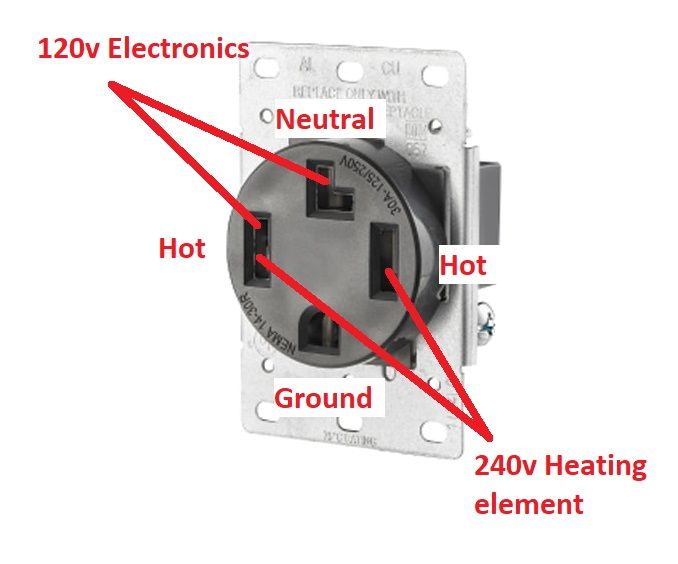Whether you need a neutral wire in an AC disconnect is an important consideration when installing or wiring an air conditioning unit. The neutral wire allows electricity to safely return to the circuit breaker panel after powering the AC unit. Let’s take a closer look at when a neutral wire is required in an AC disconnect switch.
Page Contents
What is an AC Disconnect?
An AC disconnect switch, also known as an air conditioning disconnect box, is an electrical safety device required by building codes for most air conditioning systems. It provides a way to manually shut off power to the AC unit for servicing or emergencies. The disconnect switch has a cover that can be locked, preventing accidental activation of the AC system.
The AC disconnect switch is installed in the power supply line feeding the condenser unit. It will have a rating suitable for the amperage draw of the air conditioner, usually 20, 30, or 60 amps. Higher amperage disconnects may be needed for very large commercial AC units.
Purpose of a Neutral Wire
In an AC power circuit, the neutral wire provides a return path for the electrical current after it passes through the load. The neutral connects to the earth ground at the circuit breaker panel, which gives the electrons a safe place to flow back to the source.
Without a neutral wire, the returning current would have no complete path. An open neutral can lead to overheating of electrical systems, damage to equipment, and potential shock or electrocution hazards.
The neutral wire also maintains a balanced 120V on each “leg” of the circuit by providing an equal reference point. This allows devices to function properly with stable sine wave power.
When is a Neutral Wire Needed?
Whether or not a neutral wire is required in the AC disconnect depends on the type of air conditioning unit:
- Single-phase AC systems – Most residential air conditioners are powered by a single-phase 120/240V supply. The condenser unit only requires two power wires – a hot and a neutral. Therefore, a neutral wire is always needed in the disconnect box.
- Three-phase AC systems – Larger commercial AC units often run on three-phase power. With three hot wires and no neutral, these systems do not need a neutral connection at the disconnect. The three phases balance the load.
- Packaged units – All-in-one packaged AC systems enclose the evaporator, condenser, and compressor in one cabinet. If the unit has electric heat strips or other 120V components, it will require a neutral even if the condenser is 240V-only.
It is also important to note that some equipment requires a neutral for control circuits, even if the main power supply is three-phase. Always verify the manufacturer’s wiring diagrams to determine if a neutral is needed.
Wiring with and without Neutral
Here are some wiring scenarios that illustrate when a neutral wire would and would not be present in an AC disconnect:
Single-Phase Condenser Wiring
For standard single-phase air conditioner condensers, the disconnect will include a neutral wire:

The red and black wires provide 120V power from the circuit breaker panel. The white wire is the neutral return. The green wire is the ground.
Three-Phase Condenser Wiring
In a three-phase disconnect for a large commercial AC condenser, no neutral wire is present:

The three phases – A, B, and C – provide 208V power. With all phases balanced, no neutral is needed.
Packaged Unit Wiring
A packaged AC unit with electric heat and a 120V blower motor will require a neutral, even though it may have three-phase power to the compressor:

The red, black, and blue wires provide 208V three-phase power. The white wire is the neutral for the 120V control circuit and electric heat strips.
Installing a Neutral in the Disconnect
If the air conditioning unit requires a neutral, but the existing disconnect box does not have one, the neutral can often be installed without too much difficulty:
- Turn off the circuit breaker providing power to the AC disconnect.
- Open the disconnect box and check for available space to land another wire.
- Run a new neutral wire from the panel to the disconnect box.
- Connect the neutral to the terminal block or lug inside the disconnect.
- Close up the disconnect box and turn the breaker back on.
Alternatively, a new disconnect switch with full provisions for a neutral connection can be installed:
- Turn off the circuit breaker for the AC.
- Remove the old disconnect box.
- Install an appropriately rated UL-listed disconnect with space for hot, neutral, and ground.
- Connect the AC wires, including the new neutral.
- Close up the disconnect and turn the breaker back on.
Always follow local electrical codes and permit requirements when replacing or modifying an AC disconnect box.
Conclusion
The short answer is that neutral wires are required in AC disconnects for single-phase equipment, but generally not for three-phase equipment. Packaged units may also need a neutral even with three-phase condensers due to 120V control and blower circuits.
When in doubt, consult the air conditioner manufacturer’s schematics to see if a neutral wire should be present. Attempting to operate AC equipment without the proper neutral connection can result in damage and hazardous conditions.
With the proper AC disconnect wiring, including a neutral wire when specified, you can safely power and service your air conditioning system.
